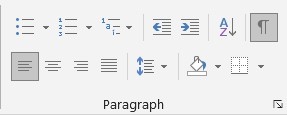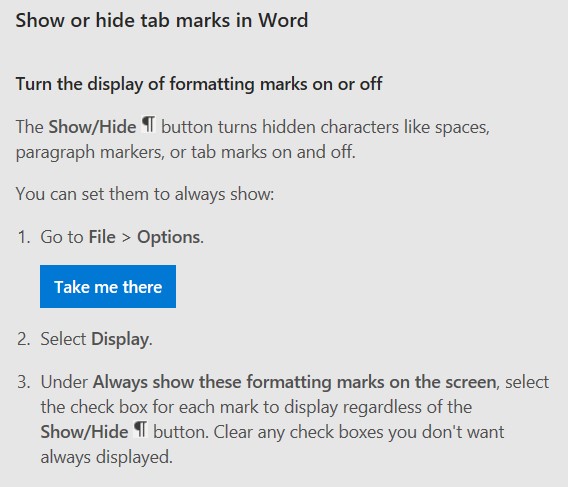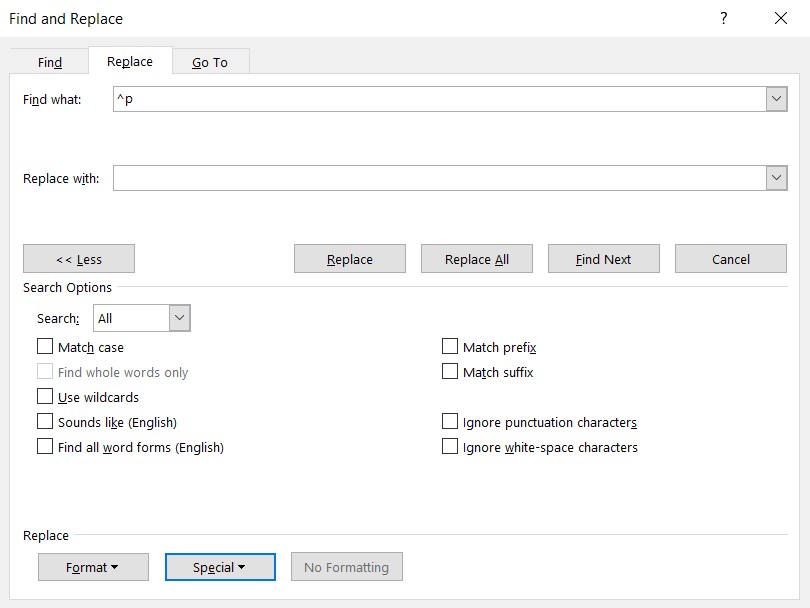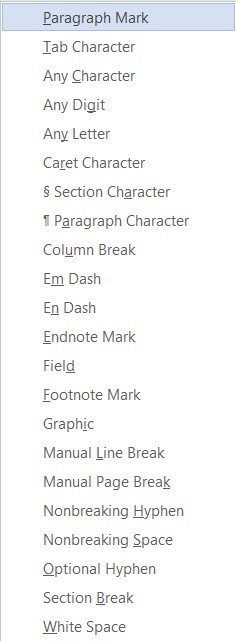How to remove paragraph marks & hard returns in Word - Microsoft Word
Written by: Hrishikesh Pardeshi, Founder at Flexiple, buildd & Remote Tools.
Last updated: Sep 03, 2024
If your job heavily revolves around writing or formatting content, you might be well acquainted with how unnecessary paragraph marks become a nuisance. Even if you have encountered them for the first time, it's likely that their use has left you confused.
So, we've compiled the below points to help you understand more about paragraph marks in Word and how to remove them. This will help you churn out well-formatted docs every time with ease.
You can also skip directly to How to remove paragraph marks in Word.
TABLE OF CONTENTS
- What is a hard return?
- How can you display paragraph marks in a document?
- How to remove hard returns
- Remove paragraph marks in Word - Find & replace paragraph marks
- How to remove paragraph marks: Step-wise summary
What is a hard return?
A hard return or paragraph break is essentially the ending of a line and beginning of a new paragraph. Pressing the Enter key while editing the document results in the word processor inserting a hard return. The enter key forces the line to break to the next paragraph.
On the other hand, soft returns allow you to continue typing without needing to press enter to go to the next line. With a soft return, words that go beyond the right end of the text-box are automatically transferred to the next line, without having to press Enter. This is also called 'word wrapping'.
How can you display paragraph marks in a document?
A backward 'P' symbol (¶), known as a 'pilcrow', is used to represent a hard return. You can choose to display paragraph marks in your Word document.
To do so, go to the 'Home' tab -> 'Paragraph' group. You will find a pilcrow as shown below, select it by clicking on it. This is called the 'Show/ Hide Paragraph mark' option.
Alternatively, you can use the keyboard shortcut 'Ctrl + *' to enable it. This function displays all the characters that won't be printed (hidden characters). With this function enabled, you can see where hard returns occur and spot where the text breaks at the wrong places.


Hard returns tend to create all sorts of errors in the formatting of content.
However, when word wrapping is enabled, soft returns make sure that your formatting remains intact. Soft returns are represented by an arrow which faces downwards then to the left side. You could also invoke a soft return via the keyboard shortcut 'Shift + Enter'.
How to remove hard returns
One direct way of removing paragraph marks in Word is to do it manually. You can edit the text by manually deleting the extra hard returns and adding a space or any other punctuation you prefer. Cleaning the document in this way is tedious, though, and there is a simpler way of going about with it, as we explain in detail below.
Remove paragraph marks in Word - Find & replace paragraph marks
You can remove paragraph marks in Word by using the 'Find' and 'Replace' commands, which are present on the right side of the 'Home' tab. Alternatively, you can use 'Ctrl+F' for 'Find' and 'Ctrl+H' for 'Replace.'

Since it is a special display character and hence not available on most keyboards, you can't simply type in the paragraph mark inside the text box. Therefore, you would need to open the Find and Replace dialog box, click on 'More' and select 'Special'.
A list of characters and symbols that you can find and replace in any line is shown here. 'Paragraph mark' will be shown at the top of this list.
However, you could also just insert '^p' in the 'Find what' textbox to save time. In the 'Replace with' text box, insert the character you want to replace it with.

Now, there may be some places where you actually want to retain paragraph marks, like at the end of a true sentence. Removal of these along with the rest would alter your text and you’d not be able to distinguish an actual paragraph end from an unnecessary hard return. In such a case, you'd need to find where there are two hard returns, at the end of the true sentences. You can then replace all such instances with a desired placeholder. It may be something like a set of asterisks (***) or any symbol of choice which isn't normally present in your text. You can do so either by using the 'Find next' option followed by 'Replace', or by using 'Replace All' to clean all at once.
For removing the unnecessary hard returns from the document:
Step 1: Simply enter a single '^p' in the 'Find what' text box
Step 2: Enter what you want to replace it with (for this, you could use a space or leave it blank) and hit 'Replace all'. Or, you could also do it one by one using 'Find next.'
Step 3: Clean up the placeholders by copying them in the 'Find what' text box and inserting the '^p' in the 'Replace with' text box.
Your document should now be good to go.
How to remove paragraph marks: Step-wise summary
To sum it up, the following set of steps should help you easily remove paragraph marks in Word:
- Make a copy of the document so you don't affect the original
- Activate the 'Replace' command (Ctrl+H or Home->Replace)
- Go to 'More' -> 'Special' in the 'Find and Replace' dialog box
- Select 'Paragraph mark.' '^p' will display in the 'Find what' text box
- Depending on your preference, use a space in the ‘Replace with’ field or leave it empty
- In case you deleted some of the paragraph marks you wanted to retain, find the placeholder you used and replace the desired ones with a paragraph mark
- Do a quick review of your document to make sure the text is formatted well
The above method can be used not only for Word, but for Excel and any other MS software you use. You can also watch the video below to understand the process in detail.
Related Articles
⇾ How to do hanging indent on Word
⇾ How to Download Images from Google Docs?
⇾ How to track changes in Google Docs?
⇾ How to Set up Gmail Auto Reply - "Out of office" and Automated messages